Installation view, Verge Gallery, Darlington, New South Wales. Photo: Zan Wimberley
'BEVO'. Installation view, Verge Gallery, Darlington New South Wales. Laser etched found acrylic sheet. 120 x 90 cm (per panel).
'BEVO' individual panels, January 2019- January 2020
'BEVO' (detail) . Laser-etched found acrylic sheet. 120 x 90 cm. This panel depicts GPS walking routes and computationally distorted heart-rate data from January to March 2019. The black trails depict walking trails within my neighbourhood in Beverly Hills, New South Wales (nicknamed 'Bevo' locally). Mirrored acrylic sheet found at 32 Cahill Street, Beverly Hills.
'BEVO' (detail) . Laser-etched found acrylic sheet. 120 x 90 cm. This panel depicts GPS walking routes and computationally distorted heart-rate data from April to June 2019. The salvaged mirrored acrylic used in this work had been amateurishly spray painted and/or possible tinted before being discarded in a house renovation.
'BEVO' (detail) . Laser-etched found acrylic sheet. 120 x 90 cm. This panel depicts GPS walking routes and computationally distorted heart-rate data from July to September 2019.
'BEVO' (detail) . Laser-etched found acrylic sheet. 120 x 90 cm. This panel depicts GPS walking routes and computationally distorted heart-rate data from October to December 2019.
'BEVO' Interpretative Panel
'BEVO' (detail) . Interpretive panel made from salvaged mirrored acrylic. In the exhibition 'Geospatial Atlas', such interpretative panels were used to provide additional information related to the artwork and specific materials and sites to which they related.
Artwork surface details
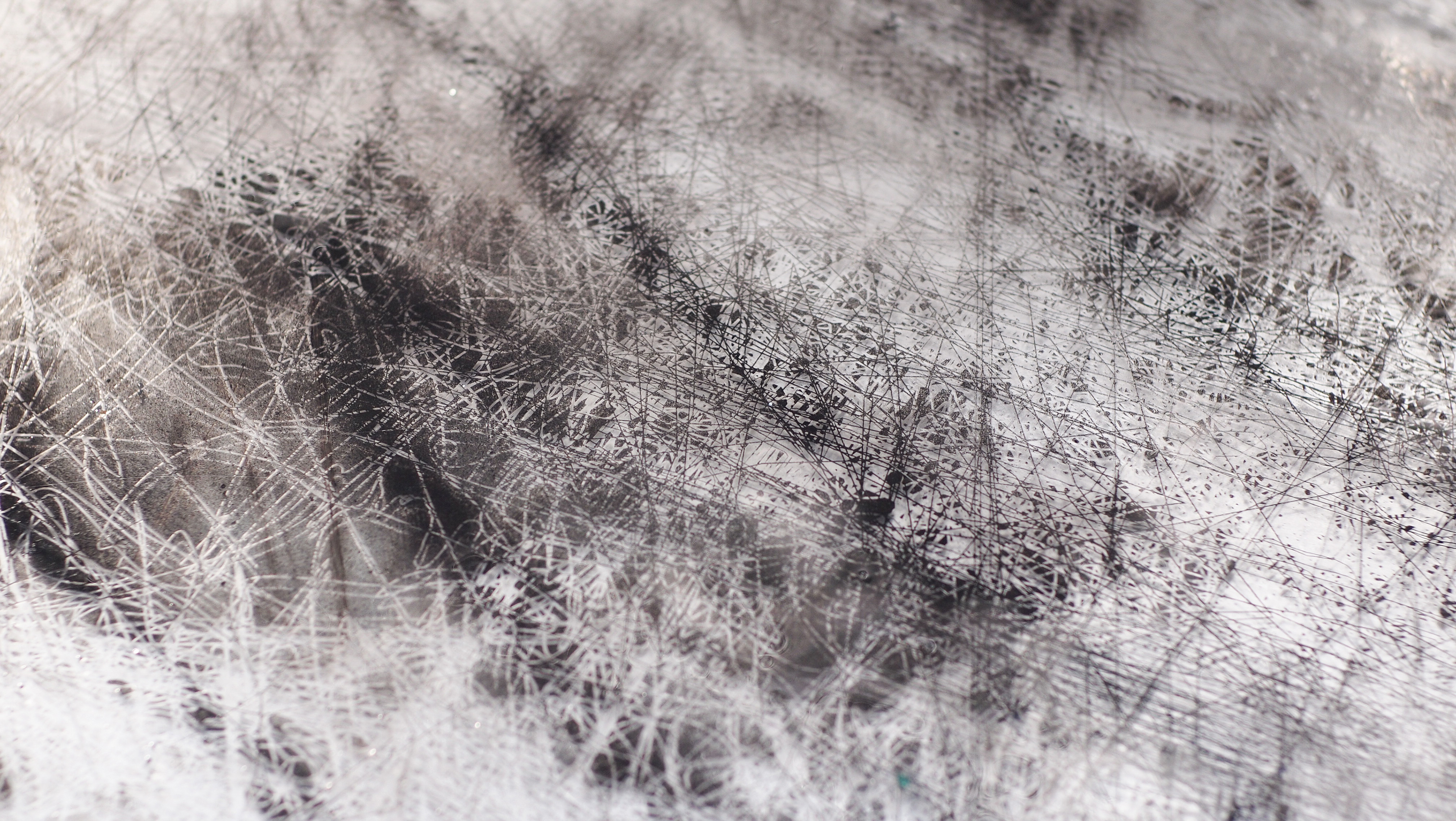

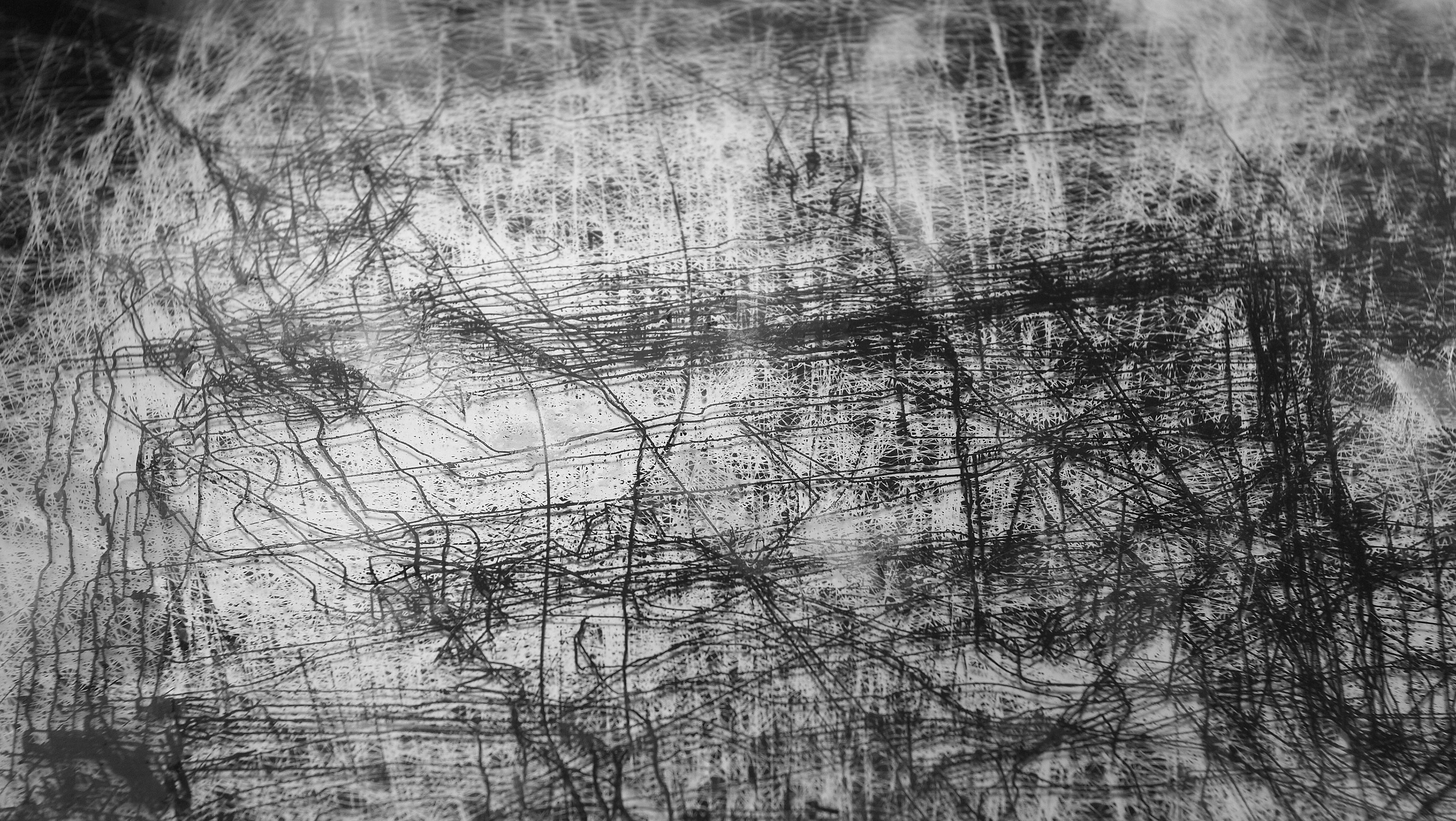
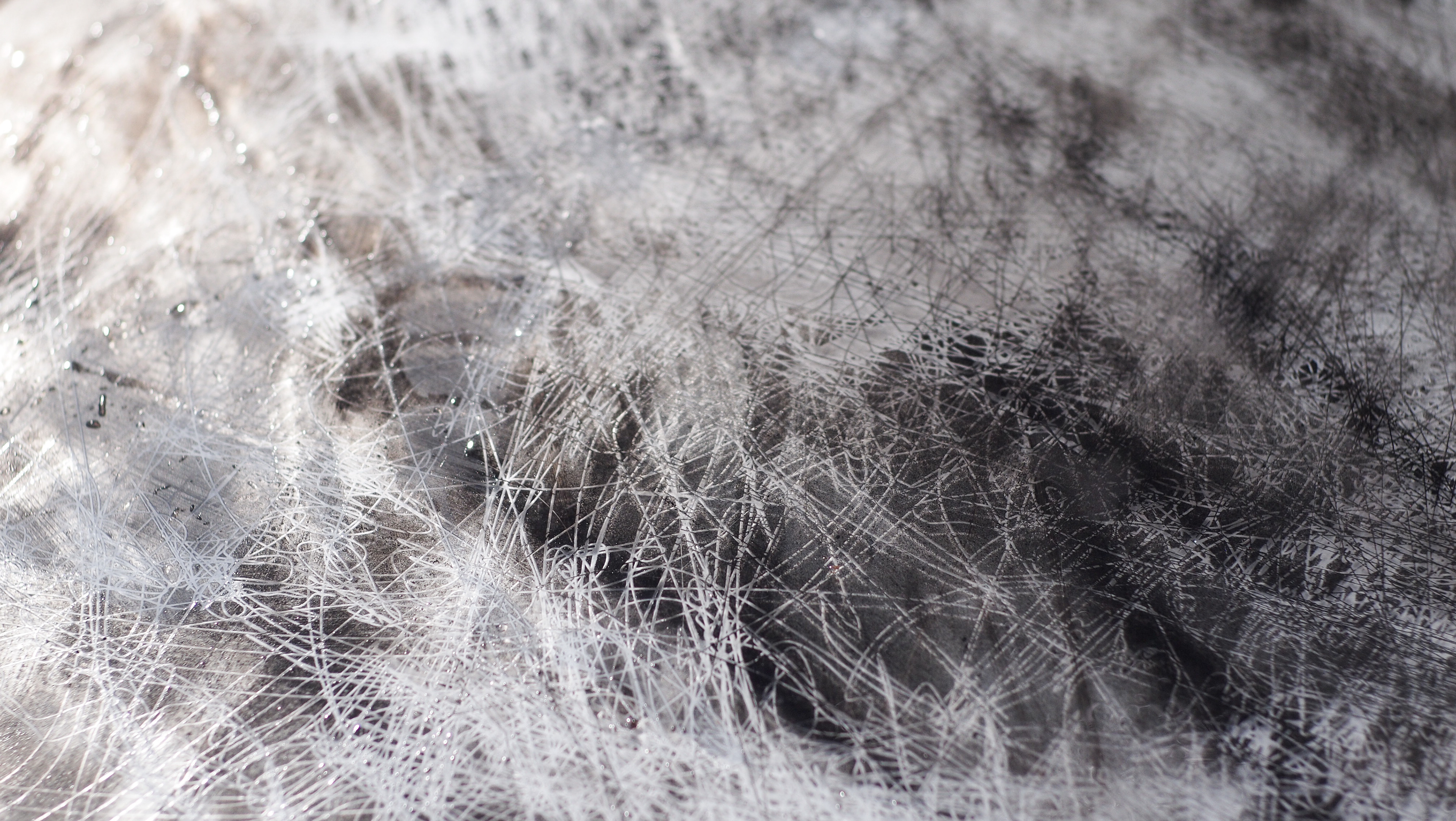
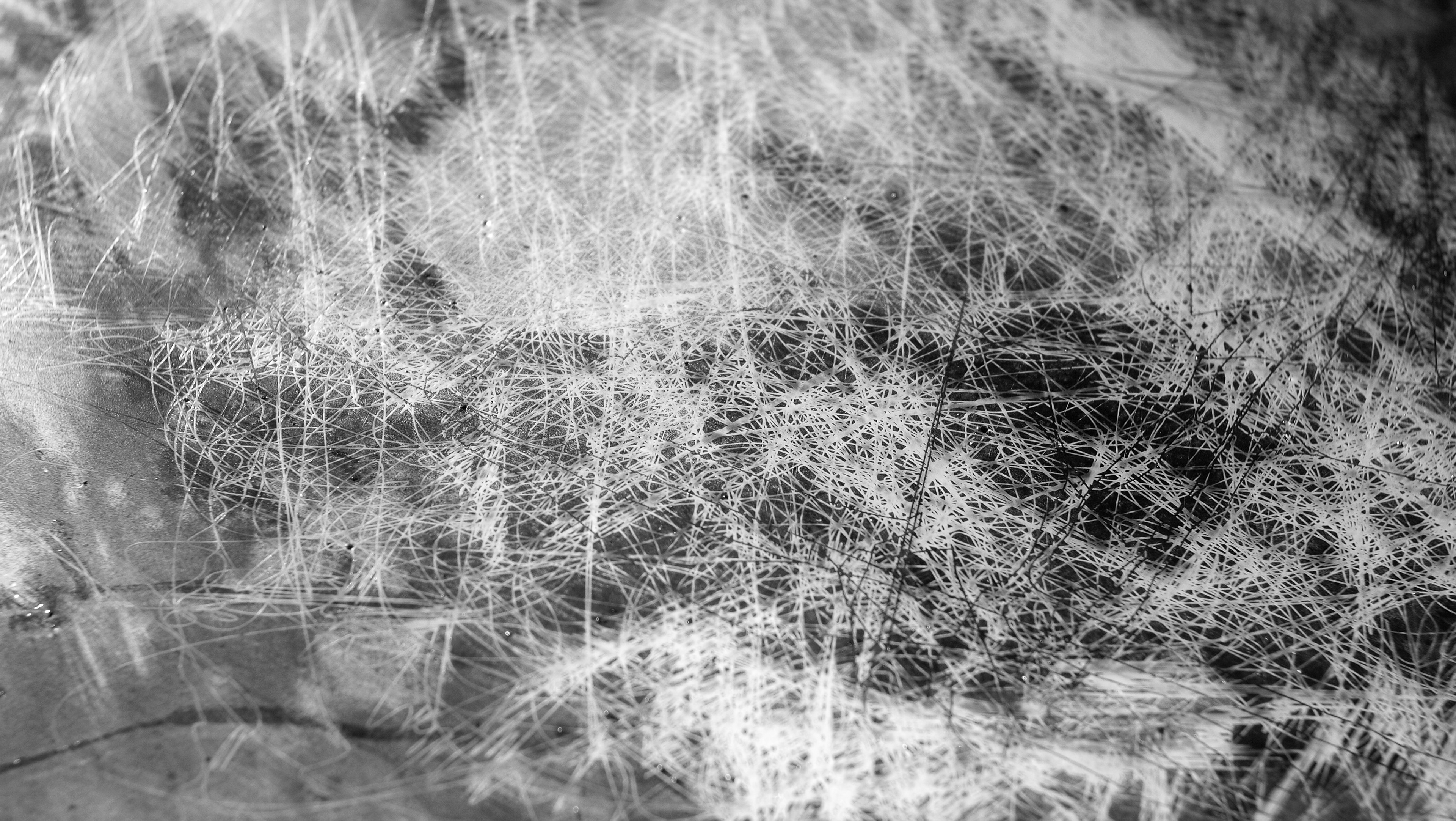
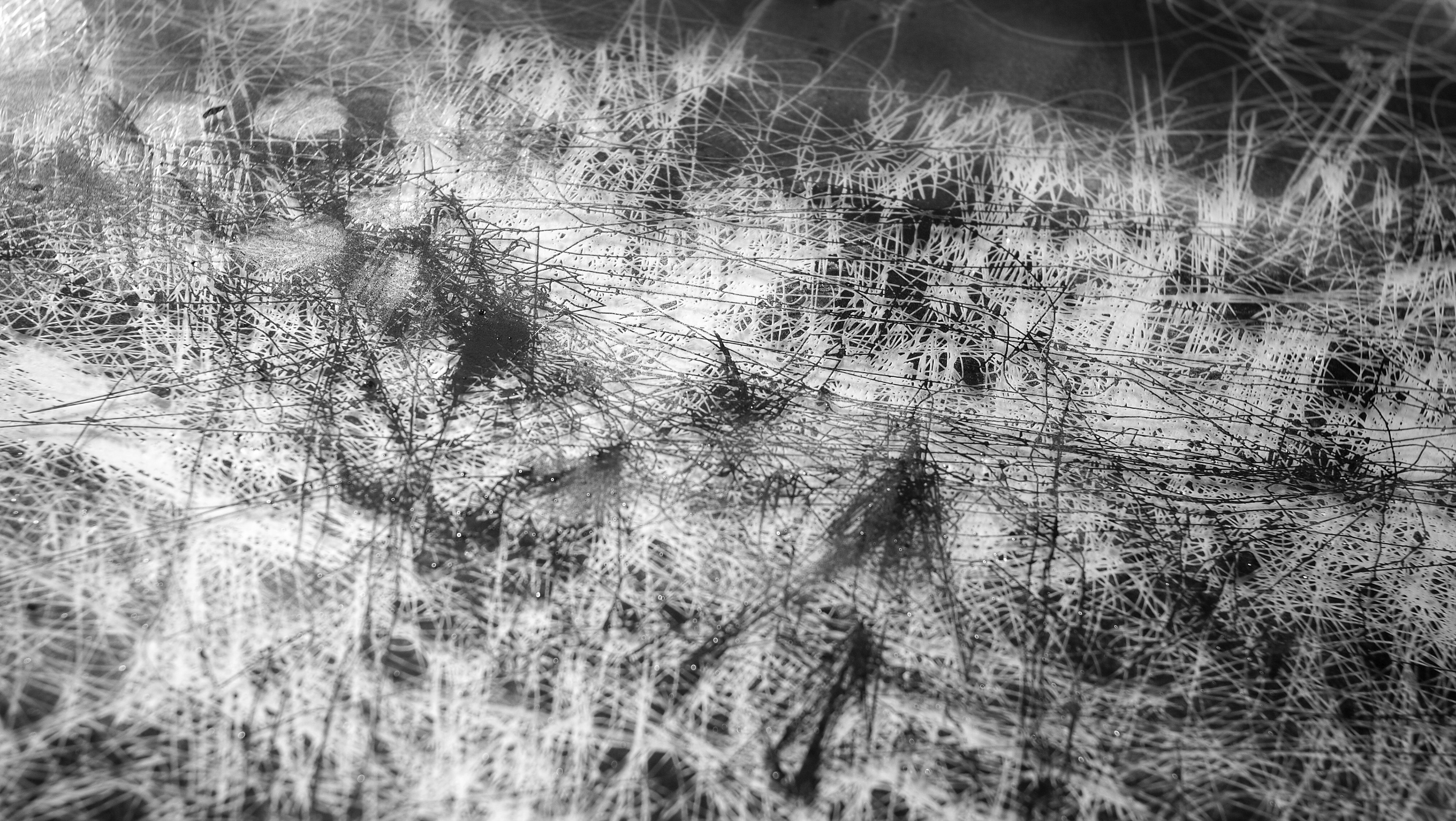
'BEVO' (details). Details showing the illusory surface of the panels, as the laser etching onto the mirrored surface created unexpected moire and opacity effects as layers of paint and grime were removed from the acrylic.
Grasshopper workflow
Work-in-progress photo showing Grasshopper definition used to computationally distort GPS data using hear-rate data from a Fitbit. The main component used to distort linework is the 'Jitter' component, which aggressively distorted GPS trails in accordance with changes in heart-rate variablility.
Found materials: Cahill Street, Beverly Hills, New South Wales



Location of found acrylic sheet used in artwork 'BEVO'. Acrylic sheet was found scattered around shed/rear of the property, prior to its demolition. The mirrored acrylic had been spray-painted, heavily scratched and broken into shards. The acrylic was alongside other discarded industrial materials, such as tiles and glass sheets, and it was unclear whether it was dumped or used by the previous occupants.
I was particularly attracted to this material as it recalled Robert Smithson's use of mirrors in early site-specific artworks. Unlike Smithson's work though, these mirrored sheets were acrylic rather than glass and were littered with traces of previous use. For me, this material also that reflected the transitional nature of Australian suburban experience; the cycles of dereliction, gentrification and urbanisation endemic within New South Wales.
I was particularly attracted to this material as it recalled Robert Smithson's use of mirrors in early site-specific artworks. Unlike Smithson's work though, these mirrored sheets were acrylic rather than glass and were littered with traces of previous use. For me, this material also that reflected the transitional nature of Australian suburban experience; the cycles of dereliction, gentrification and urbanisation endemic within New South Wales.